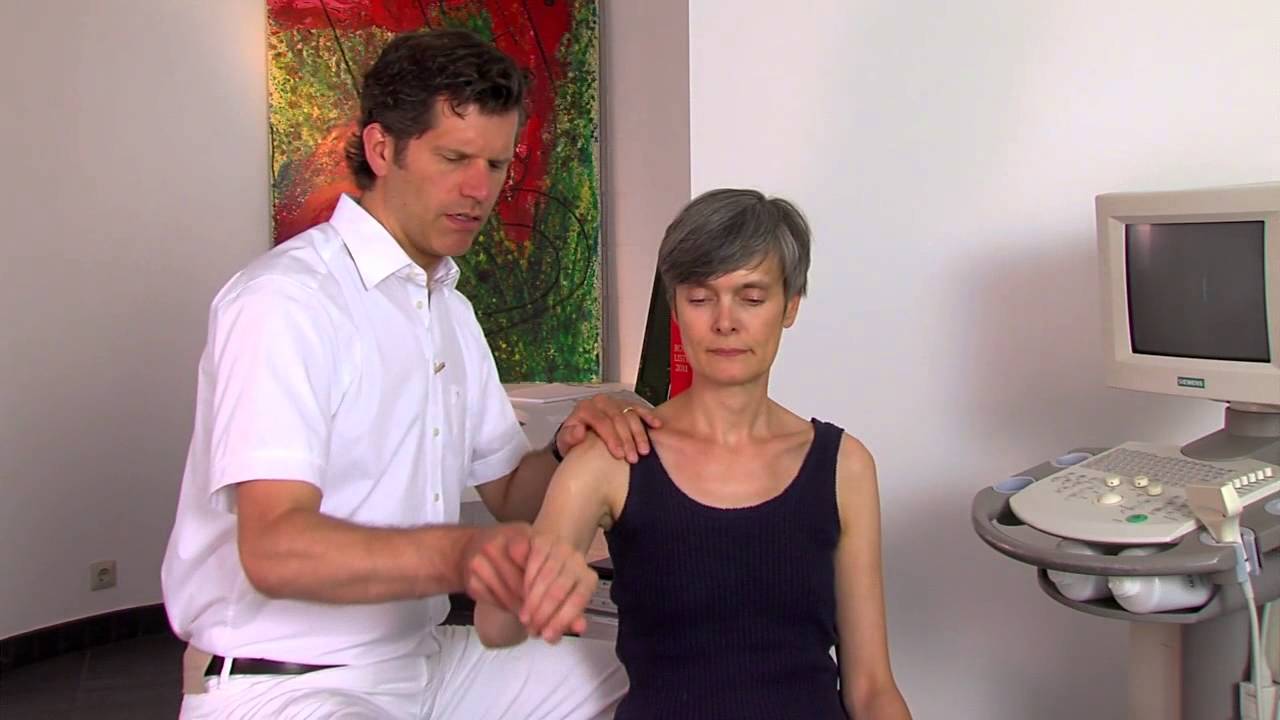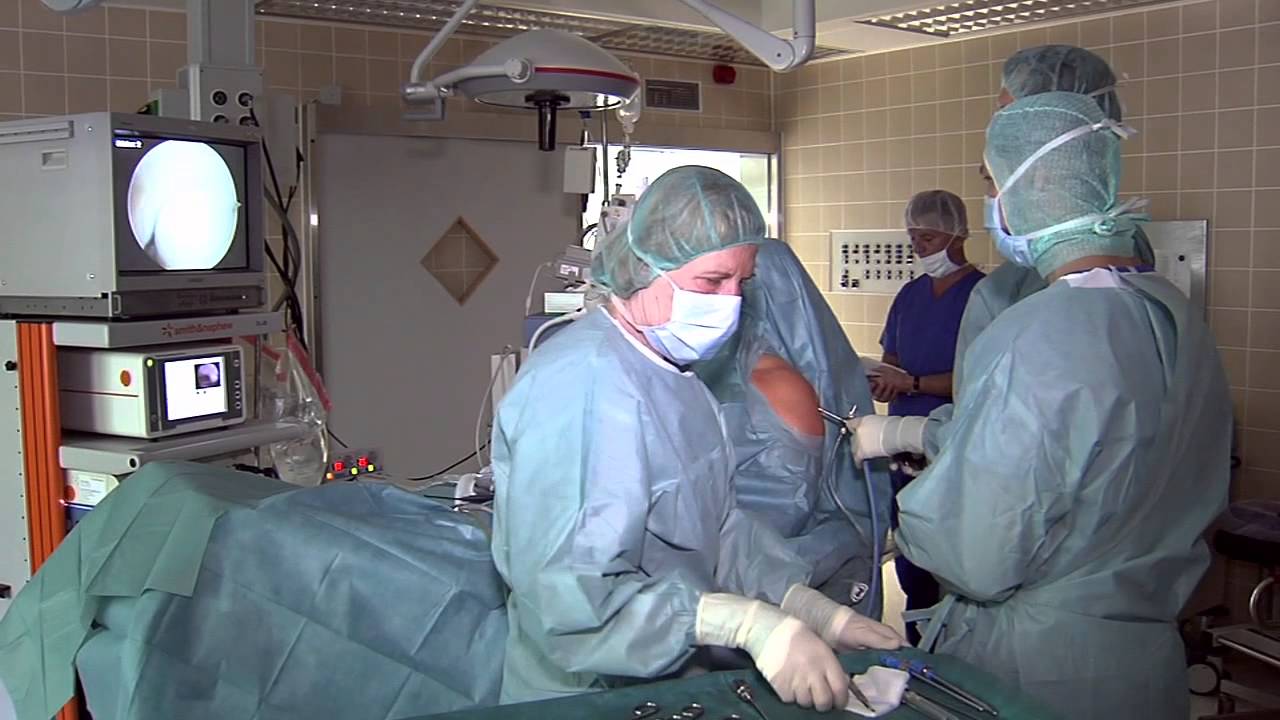
Impingement Syndrome
Shoulder pain has become a very common problem. One reason for this is certainly the positive development in our society to increase physical activities in general. However, this also causes a higher demand for medical assistance and consultation of specialists. Responsible for this phenomena is often the so-called "impingement syndrome”.
Definition: Impingement syndrome of the shoulder
An impingement syndrome is characterized by shoulder pain developed due to the narrow space between the acromion and the head of the humerus. Since by nature, a certain narrowness does already exist in this region, further narrowing can lead to chronic irritation of the tendon (supraspinatus / rotator cuff) and the bursa.
Causes: Impingement syndrome shoulder
Certain professional groups, such as house painters and construction workers often overuse the arm in upward stretching motions. However, also athletes such as tennis or volleyball players often develop an impingement syndrome. The initial load-dependent pain, especially when working with a raised arm, can cause severe pain.
An unfavorable shape of the acromion (subacromial spurs) and a wearing of the acromioclavicular joint (joint between the clavicle and acromion) often lead to a further narrowing of the sliding space below the acromion, a space that is already very tide by nature. If the tendons are squeezed repeatedly, it comes to a tendon irritation. Chronic tendon irritation can lead to the wear of the tendons, and ultimately to a tendon rupture. (Rupture Rotator Cuff).
 Video: Schulter Impingement Diagnose Kalk
Video: Schulter Impingement Diagnose Kalk
Diagnosis: Impingement syndrome shoulder
Important for the diagnosis, is the medical history of the patient, meaning an accurate assessment of the complaints, and a detailed study of the shoulder obtained with standardized tests.
An ultrasound scan provides information about the condition of the bursa and tendon (rotator cuff). X-rays reflect the conditions of the bone structure and make a narrowing of the tendon sliding space visible. Detailed information on all the structures of the shoulder provides magnetic resonance imaging (MRI).
Conservative treatment: Impingement syndrome shoulder
The sooner the problem is treated, the better the chance to treat it successfully. At the beginning, in addition to rest, conservative therapy, measures such as cold packs, anti-inflammatory ointments, and electrotherapy are sufficient.
With certain exercises (physical therapy) and specific muscle training, the position of the humeral head can be improved, to provide more space for the tendons under the acromion. If conservative treatment does not improve the symptoms, anti-inflammatory drugs (such as tablets or injections) may be recommendable.
If the above-mentioned therapeutic measures do not show lasting benefits of the impingement symptoms, the cause of the irritable condition of the shoulder has to be treated. This is necessary to prevent progressive damage to the tendon (rotator cuff) and an otherwise possibly torn tendon (rotator cuff tear). Here, the space under the acromion is extended operationally, meaning the inflamed, thickened bursa is removed, a ligament in the anterior shoulder roof (the coracoacromial ligament) is severed, and bony protrusions are removed.
 Video: Schulter Impingement Kalk OP
Video: Schulter Impingement Kalk OP
Surgical treatment: Impingement syndrome shoulder / arthroscopy
If the above-mentioned therapeutic measures do not show lasting improvements, the cause of the irritable condition of the shoulder has to be treated surgically to prevent progressive damage to the tendon (rotator cuff) and a possible tearing of the tendon (rotator cuff tear).
Here, the space under the acromion is extended surgically, e.g. the inflamed, thickened bursa is removed, a ligament in the anterior shoulder roof (the coracoacromial ligament) is severed, and bony protrusions are removed. The surgical procedure should be performed arthroscopically.
In shoulder arthroscopy usually only two about 3 mm small incisions are needed for the surgery. In one of these incisions, a mini camera is inserted into the shoulder joint in order to accurately assess all important structures (tendons, ligaments, bursae, cartilage, etc.). Through the second incision the surgeon repairs the damage to the shoulder with appropriate special instruments.
Anesthesia: Surgical treatment impingement syndrome shoulder / arthroscopy
A shoulder arthroscopy for the treatment of impingement syndrome is performed under anesthesia.
Frequently, local anesthesia of the cervical plexus is administered in addition to the general anesthesia. This additional local anesthesia, allows the anesthesiologist to lower the dose of medication needed for general anesthesia. This combined anesthesia is usually well tolerated by the patient.
Postoperative treatment: Impingement syndrome shoulder / arthroscopy
After arthroscopic extension of the sliding space of the tendon below the acromion, the shoulder needs some protection, however, it should be moved gently as early as possible after the surgical intervention. Immobilization in a bandage is not required.
It is recommended that the patient exercises regularly on his/her own. Exercises should consist of simple movements. During the first two to three weeks after surgery, physiotherapy should accompany the healing process. Medication to reduce the swelling, anti-inflammeratories (e.g. ibuprofen 3 x 600 mg per day or diclofenac 2 75 mg per day) should be taken during the initial phase of post surgical treatment to support the healing process.
Regular cooling (cold packs) of the shoulder is most often helpful to reduce the pain. Long-term medicinal treatment with pain relievers is in most cases not needed. Generally, daily activities as well as driving can be resumed two to three days following surgery.
Prognosis: Surgical treatment impingement syndrome shoulder / arthroscopy
The arthroscopic treatment of an impingement syndrome, if performed by an experienced shoulder specialist, carries low risks and achieves excellent results. The patient is pain free and additionally, the treatment prevents a tearing of the tendon (rotator cuff rupture) in the near future.
Specialists: Impingement Syndrome Shoulder
For an optimal treatment of a impingement syndrome, the knee experts at the Klinik am Ring are particularly well-qualified. Stefan Preis, M.D. and Jörg Schroeder, M.D., senior physicians at the Practice and Department of Orthopedics and Sports Traumatology at the Klinik am Ring in Cologne, specialize together with their team in the treatment of knee and shoulder disorders. In 2004, they founded the WEST GERMAN SHOULDER KNEE & CENTER, Cologne. The team consisting of eight specialists treats more than 10,000 patients per year. They are conduction more than 2500 surgeries per year of which are about 500 arthroscopic surgeries related to impingement syndrome of the shoulder.



